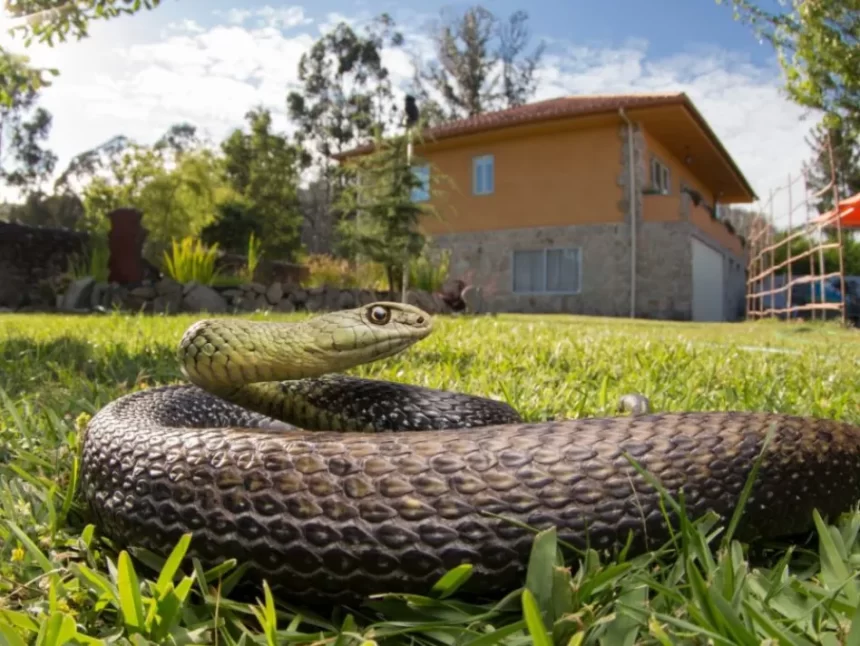Experts warn Aussie homeowners to be vigilant of increased snake activity, as continued hot and dry weather conditions make homes an inviting refuge for the commonly feared reptiles.
The warning comes as the nation suffers the effects of an ongoing El Nino weather event, bringing extreme heat and low rainfall across Australia’s east.
The extra mercury has resulted in many of the nation’s snake catchers seeing “higher than normal” call-out numbers during this year’s “snake season”.
Tim Hudson from Gold Coast Snake Catching told Build-it snakes would first be attracted to homes that provide an easy meal and would attempt to seek refuge in and around that home during extreme heat conditions.
“First thing homeowners need to think about is – are they doing anything to attract more mice and rats to their home – because once you have a rodent problem, you’ll have a snake problem,” Mr Hudson said.
“Do they have a bird feeder or pet food left outside, or do they have a chook pen or loose waste?”
Meanwhile a spokesperson for SEQ Snake Catchers told Build-it the increase in hot and dry conditions meant properties close to water sources or with shaded areas could see an uptick in snake traffic.
“If they back onto water or there’s a creek running past, they’re going to have high snake activity – there’s no two ways about it,” he said.
“Are there building materials, tarps, roofing materials, loose pavements and bricks lying around that provide a refuge and cool environment? Those are all magnets for snakes as they provide perfect climate control.”
Snakes have to choose their environment based on temperature due to being cold-blooded animals, with weather above 32 Celsius forcing them to seek cooler surroundings, which can inadvertently lead them to venture inside properties.
“It’s all about thermo-regulation with them – they need to remain in their sweet range of 27 to 32 degrees,” he explained.
“If they’re between those temperatures, they are able to catch food; any colder, they become sluggish and docile, and any warmer, they’ll just cook.”
Tips to snake-proof your home
- Cover all holes leading into the house and garage; inspect doors, walls, flyscreens, window seals, and roofing for any holes or gaps.
- Maintain a tidy garden; keep the lawn low and remove or cover any items that could provide shelter, such as wood stacks, concrete slabs, loose pavements or bricks.
Remove covers from pools, sheds or barbecues carefully.
- Block cavities in rock walls and similar structures to prevent snakes from entering, even if small, as snakes can squeeze into gaps one-third of their circumference.
- Place mice or rat bait around the house and out of reach of pets.
- Put mesh or similar covers around chicken pens and aviaries to prevent snake ingress.
- Dispose of food scraps in covered bins, and keep bird seeds in hanging feeders that limit floor droppings.
- Minimise leafy shrubs and bushes to discourage snakes from settling in the area.
More venomous snakes found near residential areas
Mr Hudson told Build-it that properties could provide the perfect heat refuge for some of Australia’s most feared and venomous snakes, and warned residents not to try and remove snakes themselves.
“As we move further into this El Nino phase, the hotter and dryer conditions will bring an uptick of front-fanged venomous snakes such as the Eastern Brown and Red Bellied Black snake,” said Mr Hudson.
“And, it’s when people try to interact with snakes that they come unstuck. This is when 99 per cent of snake bites occur,” he explained.
“You don’t need to get a photo of the snake, and we don’t want the public to try to kill or catch the snake themselves…that’s normally where people go wrong.”
Guidance from the Department of Environment and Science echoed Mr Hudson’s warning.
“Never interfere with snakes. They will defend themselves. A high proportion of snakebites have resulted from people trying to handle, interfere with, or kill snakes,” they advised.
“If a snake finds its way into your home, close the internal doors, open the external doors and give the snake a chance to leave.”







